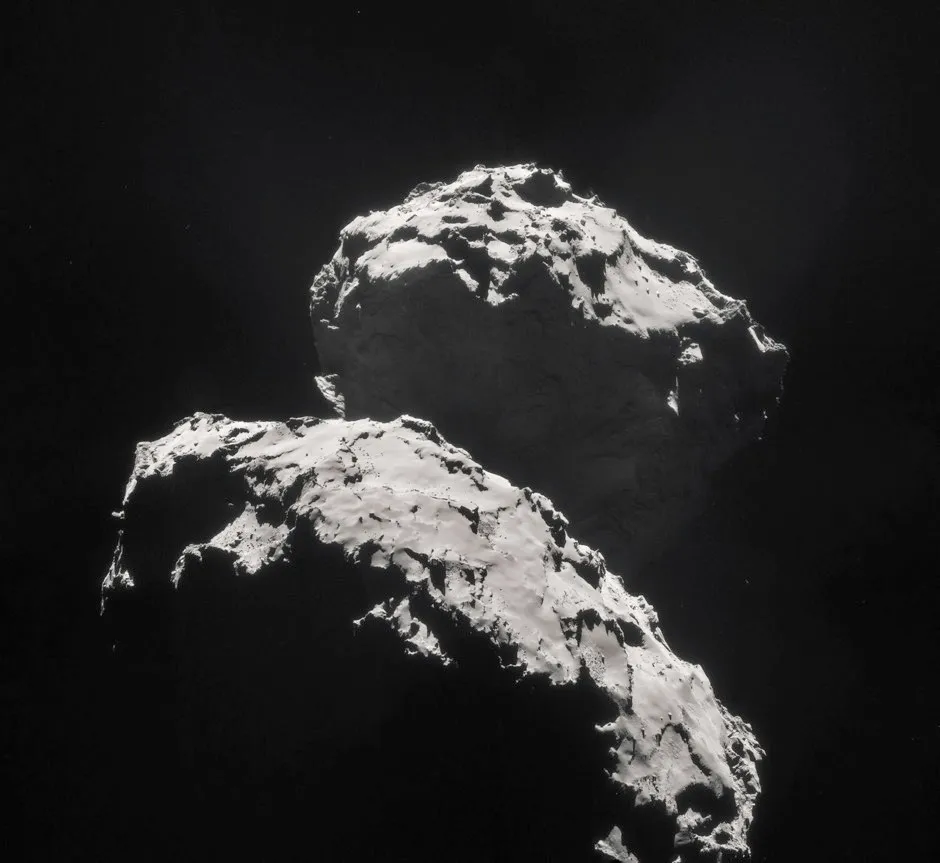A chemical element fundamental to all living things on Earth may have come from comet strikes, astronomers say.
A new study suggests phosphorus, which is present in DNA and cell membranes of all living organisms, may have been delivered by the icy wanderers billions of years ago.
Scientists found evidence of phosphorous monoxide in 67P/Churyumov-Gerasimenko, a comet belonging to the Jupiter family.
While phosphorus is considered one of the key ingredients of life alongside, carbon, hydrogen, nitrogen, oxygen and sulphur, how it arrived on the early Earth has remained a mystery to astronomers.
Victor Rivilla, of the National Institute for Astrophysics’s Arcetri Astrophysical Observatory in Italy and the lead author on the study, said: “Life appeared on Earth about four billion years ago but we still do not know the processes that made it possible.”
Read more about comets and asteroids:
- Five things you (probably) didn't know about comets and asteroids
- Who really discovered Halley's Comet?
- The sky is falling: should you be worried about asteroids and comets?
- Cosmic origins: the miraculous journey from dust clouds to life
To find out more, an international team of astronomers used a group of telescopes in Chile called the Atacama Large Millimeter/Submillimeter Array (Alma) to study a region in the constellation of Auriga known as AFGL 5142, where stars are being formed.
Observations showed that when massive stars are formed, they open up cavities in the surrounding interstellar clouds of gas and dust where phosphorus-based compounds, such as phosphorous monoxide, are created.
The astronomers then looked at data from the European Space Agency’s probe Rosetta, which was launched in 2004 to study 67P, and found evidence of phosphorous monoxide.

They say the findings allowed them to trace the journey of phosphorus from star-forming regions to comets.
The astronomers believe that when cavity walls in the interstellar clouds collapse to form a star, phosphorus monoxide can get trapped in the icy dust grains that remain around the new star.
Those dust grains gradually come together to form pebbles, rocks and ultimately comets, which then become transporters of phosphorus monoxide.
Kathrin Altwegg, of the University of Bern in Switzerland and one of the study authors, said: “Phosphorus is essential for life as we know it.
“As comets most probably delivered large amounts of organic compounds to the Earth, the phosphorus monoxide found in comet 67P may strengthen the link between comets and life on Earth.”
The study is published in the journal Monthly Notices of the Royal Astronomical Society.
